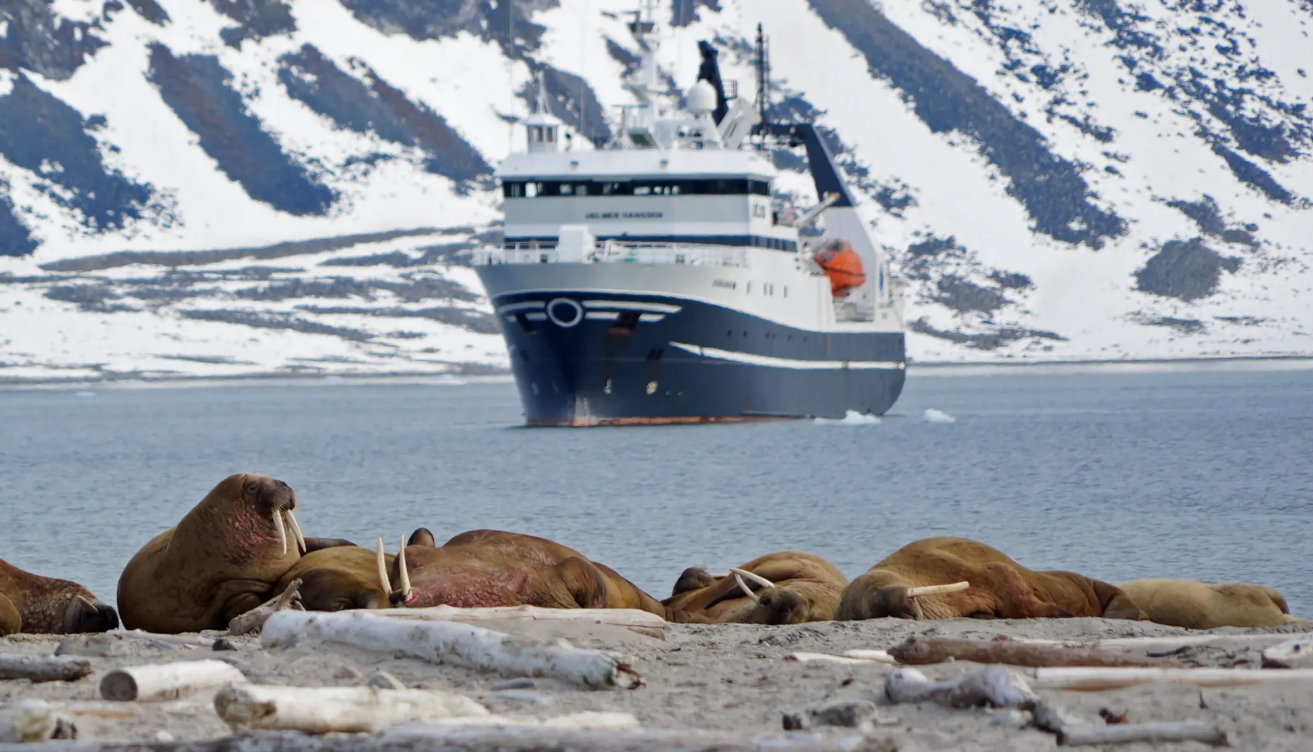Be it walrus or polar bear, new regulations is clear: Keep longer distance

More and more expedition cruise ships are sailing into the Arctic with passengers thirsty for posting their own photos of polar bears on Instagram or other social media.
That will be nearly impossible with Norway’s newly adopted changes to the conservation regulations for Svalbard.
It is now a general prohibition against unnecessarily disturbing, attracting or pursuing polar bears. No cruise ships can long sail towards a polar beer if spotted in distance.
“One must keep at least 300 meters away from bears,” the Governor of Svalbard writes and adds: “In the period from March 1 to June 30, one must keep at least 500 meters away.”
Such distance is too far away for most telephoto lenses.
The Governor makes clear that if a polar bear is discovered at close range, one is obliged to retreat. Good news for the bears, but the changes are not necessarily welcomed by all travel companies that flavours itineraries brochures with photos of the King of the Arctic.
“…. here you can spot walruses and whales in the coastal waters, polar bears on the sea ice edge, arctic foxes and reindeer on-land, and many species of seabirds in the sky,” Quark Expeditions states on its portal. The cruise liner runs Svalbard cruises from May to August.
Silversea cruise liner writes: “… you’ll discover majestic landscapes teeming with walruses, seals foxes and bears.” Embarking on a 7 days Svalbard luxury tour will cost you from €17,200.
Norway’s new regulations are aimed at preserving Svalbard’s vulnerable wildlife in times of growing environmental stress due to climate changes and more human activities in the Arctic.
When travelling at sea, visitors must keep at least 150 meters from walrus haul-sites and if driving closer than 300 meters to the haul-sites, the maximum speed is 5 knots.
The same speed limit applies for bird cliffs during the period from April 1 to August 31 of the boat is closer then 500 meters from land.
It is also introduced a general ban on breaking fast ice. This means that expedition cruise vessels that include Hinlopen strait or other destinations at Nordaustland can’t always be sure they will be allowed to sail as it here can be fast ice in May and June.
Vessels carrying more than 200 passengers will be prohibited from accessing national parks and nature reserves.
Smaller vessels, though, will still be allowed to do Zodiac cruising within the national parks and nature reserves. About 65 percent of Svalbard is protected.
Use of drones at Svalbard have already been in place for several years, prohibiting their use for recreational purposes aboard cruise ships, in Longyearbyen or in national parks and nature reserves.
Related stories from around the North:
Canada: In the gateway to the Arctic, fat, ice and polar bears are crucial. All three are in trouble, The Associated Press
Norway: On thin ice, more polar bears move from Svalbard to Franz Josef Land, The Independent Barents Observer
Russia: Polar bears face extinction in Svalbard and Arctic Russia says scientist, The Independent Barents Observer
United States: Alaska polar bear den disturbances part of ‘death by a thousand cuts,’ researcher says, Alaska Public Media



